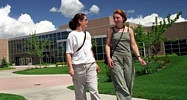|
|
 Acne (1,500) Acne (1,500)
 Addictions (1,500) Addictions (1,500)
 Advice (1,500) Advice (1,500)
 Allergies (1,092) Allergies (1,092)
 Alternative Medicine (1,500) Alternative Medicine (1,500)
 Anti Aging (1,500) Anti Aging (1,500)
 Breakup (1,500) Breakup (1,500)
 Cancer (1,499) Cancer (1,499)
 Dental Care (1,500) Dental Care (1,500)
 Disabilities (1,500) Disabilities (1,500)
 Divorce (1,500) Divorce (1,500)
 Elderly Care (1,498) Elderly Care (1,498)
 Goal Setting (1,500) Goal Setting (1,500)
 Hair Loss (1,500) Hair Loss (1,500)
 Health and Safety (1,497) Health and Safety (1,497)
 Hearing (1,500) Hearing (1,500)
 Law of Attraction (1,499) Law of Attraction (1,499)
 Marriage (1,500) Marriage (1,500)
 Medicine (1,497) Medicine (1,497)
 Meditation (1,499) Meditation (1,499)
 Men's Health (1,500) Men's Health (1,500)
 Mental Health (1,500) Mental Health (1,500)
 Motivational (1,500) Motivational (1,500)
 Nutrition (1,495) Nutrition (1,495)
 Personal Injury (1,499) Personal Injury (1,499)
 Plastic Surgeries (1,500) Plastic Surgeries (1,500)
 Pregnancy (1,496) Pregnancy (1,496)
 Psychology (1,500) Psychology (1,500)
 Public Speaking (1,500) Public Speaking (1,500)
 Quit Smoking (1,500) Quit Smoking (1,500)
 Religion (1,499) Religion (1,499)
 Self Help (1,500) Self Help (1,500)
 Skin Care (1,500) Skin Care (1,500)
 Sleep (1,500) Sleep (1,500)
 Stress Management (1,500) Stress Management (1,500)
 Teenagers (1,492) Teenagers (1,492)
 Time Management (1,500) Time Management (1,500)
 Weddings (1,500) Weddings (1,500)
 Wellness (1,500) Wellness (1,500)
 Women's Health (1,500) Women's Health (1,500)
 Women's Issues (1,500) Women's Issues (1,500)
|
Along with brain injuries, spinal cord injuries are among the most severe and life-destroying injuries a person could sustain. In fact, the spinal cord is like an extension of the brain. It is a rope of nerves that runs from the base of the brain (medulla oblongata) down inside the spinal bones to about waist level. The bones (vertebrae) continue on down to the hip area, where we sit on the coccyx. Being inside those bones protects the spinal cord from many potential injuries, and any of those bones can be damaged or chipped without the spinal cord necessarily being hurt.
But an event like a car accident, sports accident, or slip and fall can so damage the spinal vertebrae that the spinal cord may be bruised, pinched, or severed. Then a wide assortment of consequences will happen, depending on how severely the spinal cord is damaged and at which exact point it is damaged.
The Job of the Spinal Cord
The main function is to transmit nerve information from the brain to the body parts and from the body parts to the brain.
• Messages traveling out from the brain are movement instructions, traveling in motor nerves, such as “Jump quickly and catch that basketball!”
• Messages traveling back to the brain carry sensation information, traveling in sensory nerves, such as “Aarrgghh! The coffee’s too hot!”
The spinal cord branches out through the vertebrae to extend throughout the body. These branches are referred to as the spinal nerves, and they exist in 31 pairs – a pair for each spinal bone. One nerve in each pair is a motor nerve exiting from the spinal cord, and the other is a sensory nerve returning from the body to join the spinal cord.
Spinal Cord Segments
When a person sustains a spinal cord injury, the resulting paralysis or disability will be determined by which segment is damaged. The vertebrae are divided into five segments and the corresponding nerve pairs are named accordingly, as, for example, Cervical 1 through 8.
• Eight cervical vertebrae – spinal nerves C1 to C8, controlling the back of the head, neck, shoulders, arms, hands, and diaphragm
• Twelve thoracic vertebrae – spinal nerves T1 to T12, controlling the torso and some parts of the arms
• Five lumbar vertebrae – spinal nerves L1 to L5, controlling the hips and legs
• Five sacral vertebrae – spinal nerves S1 to S5, controlling the groin, parts of the legs, and the toes
The spinal base is one coccygeal bone (several vertebrae fused together).
Complete and Partial Spinal Cord Injuries
A complete injury removes all function below that injury location. There will be no movement and no sensation because the nerve messages that would normally enable them cannot travel past the injury. Quadriplegia (paralysis of both arms and legs) and paraplegia (paralysis of the legs) can result from a complete injury
A partial injury will leave some movement and sensation intact. One side of the body may remain more functional than the other, or one limb will function more than the others. Partial injuries are individual to each person.
Impaired Body Functions
Besides causing loss of movement and sensation, spinal cord injuries can impair any of the body’s functions such as urination, blood pressure, heart rate, fertility, breathing, body temperature, and sweating ability. There will also be secondary complications arising from these initial impairments. Examples of those would be a greater susceptibility to infection, respiratory disease, or stroke.
Auto accidents cause more spinal cord injuries than any other trauma. Other causes are violent attacks, falls, and sports injuries, especially diving incidents.
Treatments of spinal cords are as various as the injuries themselves. When the injury is caused by somebody’s negligence, medical attention is often supplemented by legal advice and representation. If you have suffered a spinal cord injury, or if you have a loved one who has, why not learn more about your legal options by getting a free consultation with an experienced spinal cord injury attorney ?
|
|
|



